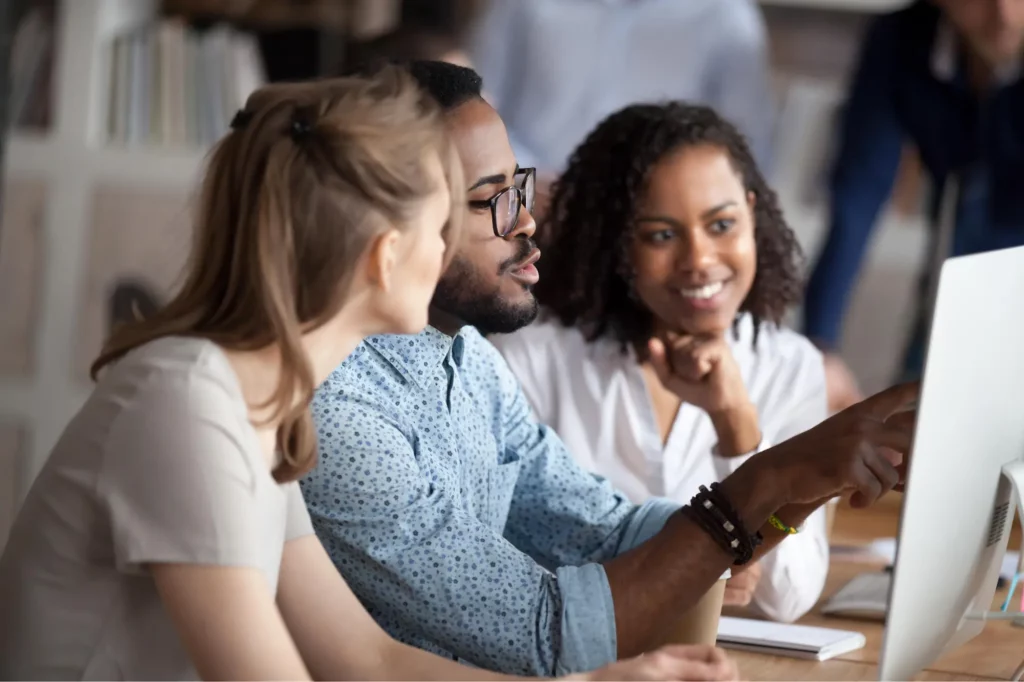Bias is a type of prejudice or distortion which affects many aspects of life, from the types of jobs available to which politicians get elected. The term “bias” refers to an inclination of thought or judgment towards a certain position. It can be conscious or unconscious and often manifests itself as an unfounded opinion, leading people to adhere to certain views without considering evidence or alternative perspectives.
The Effects of Bias
The effects of bias are far-reaching and can shape our decisions from anything as serious as how we vote in elections to what food we buy at the grocery store.
Unfortunately, without the proper understanding or willingness to combat these biases, it can become difficult for marginalized members in our communities to gain basic rights that so many others take for granted. Society must work together toward understanding bias and strive for greater inclusivity to create a level playing field for these marginalized members. And this process starts with overcoming these biases.
Bias comes in many forms, both overt and subtle. From workplace discrimination based on gender and/or race to political partisanship that discounts science, there are countless examples of bias manifesting itself in everyday life.
What are the different types of bias?
There are two main types of bias to be aware of, conscious bias and unconscious bias.
Conscious bias is sometimes known as explicit bias. This is a type of bias that you are aware of. The bias is happening consciously, in that you know you are being biased and are acting with intent. An individual with conscious bias is likely to be explicit with their beliefs and attitudes and behave with clear intent. This type of bias typically leads one to discriminate against people or groups of people. There is usually malicious intent involved in conscious biases.
Unconscious bias is also known as implicit bias. It is a very different bias than conscious bias for several reasons. Unconscious biases are beliefs and attitudes that operate outside of a person’s awareness and control. Unconscious bias can be in direct contrast with the beliefs and values you think you hold. You may not even be aware that you hold these biases, or that they are affecting your attitudes and behaviors. Unconscious biases are difficult to identify. They may influence your actions and behaviors more than conscious biases without you realizing it. Taking an implicit bias test will help you identify your unconscious bias.
Besides the two main types of bias, there are several others that can affect how you interact with others and make decisions. Let’s a few of these other common forms of bias:
Cognitive biases include mental shortcuts that lead people to reach erroneous conclusions. Examples include confirmation bias (emphasizing facts that support one’s own view) and the overconfidence bias – deciding with inadequate research data because of overconfidence.
Gender Bias occurs when someone is treated differently based on their gender identity, whether consciously or unconsciously. Common examples include paying women lower salaries than men for equal positions and preferential treatment given to male employees.
Racial Bias is a form of discrimination based on race, ethnicity, or nationality. It involves negative attitudes and stereotypes regarding individuals who belong to certain racial or ethnic backgrounds and can result in lower levels of education, healthcare, wealth, and other areas of life.
Political Bias occurs when someone ignores facts supporting an opposing political agenda in favor of promoting their own party’s beliefs — regardless of factual evidence against them — often causing distortions in public opinion polls and research data used by regulatory entities like the Environmental Protection Agency (EPA).
Anchoring bias occurs when you rely too heavily on one piece of information when making a decision or taking an action. This type of bias often leads to overvaluing that specific piece of information while simultaneously ignoring all other factors.
Stereotyping bias is common in both personal and professional relationships and arises when people assign characteristics to someone based solely on their characteristics, such as race, gender, or ethnicity. This type of biased behavior can limit access to resources or opportunities because of inaccurate assumptions about an individual’s ability or capacity.
Confirmation bias refers to placing too much value on findings that support pre-existing beliefs without considering any opposing evidence that could potentially derail those beliefs. Confirmation bias leads us to overlook research data, information, or evidence that could influence our decision-making process by contradicting our preconceived notions regarding a particular subject or topic.
The halo effect is another form of cognitive bias which involves individuals forming opinions about a person based solely on preconceived notions about them rather than facts or actual knowledge about their abilities or qualities. For example, if you already hold positive views about an individual, this could lead you to make more favorable assumptions about their abilities or qualifications, regardless if there is actual proof or evidence to back it up.
Availability bias occurs when we make decisions using only the most easily available data instead of considering alternative examples that may have more relevance to our decision at hand. For instance, instead of doing extensive research regarding a particular stock market trend before investing money in it – you might use your instincts solely as they’re more readily available than reliable research reports regarding such investments.
How you can avoid bias from affecting you negatively
Having an open mind and respecting other people’s opinions are two of the most important things when it comes to avoiding bias in your work, life, and even personal values. Bias can be a tricky thing to avoid, and it’s easy for us to slip into our own judgments and decisions without thinking twice about it. Here are a few tips to help you avoid letting your bias influence your decision making negatively.
Recognize Your Biases – The first step to avoiding bias is being aware of all the biases that you have been programmed with since birth. You need to recognize not only what you believe but why you believe it so you can understand where any prejudice may come from. This helps you become conscious of your personal limitations and provides a perspective on situations with a bit more clarity.
Analyze Your Assumptions – It’s a good idea to make sure that your thoughts and opinions are backed up with facts when making important decisions. Do a gut check before you make any assumptions before coming up with conclusory statements, as these can often be riddled with biases just as much as stereotypical views or beliefs.
Be Open-Minded – Having an open mind means being receptive towards different opinions regardless if they conflict with yours or not. Often, closed-mindedness leads to biases like stereotyping, which reflects badly on one’s judgment. Practicing humility will help in recognizing everybody’s true worth despite their race, gender, nationality or ethnicity; allowing for informed opinion making rather than biased assumptions fueled by external factors.
Filter Out Unnecessary Details – It’s human nature to miss details while reading or listening which also makes it easier for misinterpretation leading to ill-informed bias based judgments or decisions. Always take the time needed when analyzing a situation before judging or making major decisions even if there’s ‘not enough time’. Reviewing additional information or a having a conversation with individuals who are more informed about a topic will help you filter out unnecessary bias and hopefully avoid prejudice.




